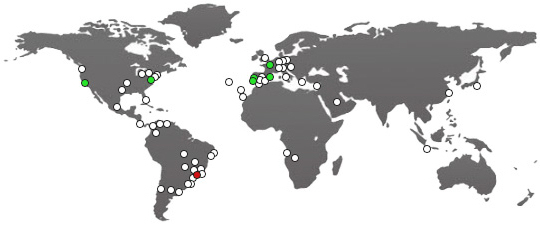Home page Care Health Treat other Diseases Acidity in the stomach
Acidity in the stomach

The medical plant Aloe Arborescens treats the disease Acidity in the stomach more efficiently than Aloe Barbadensis (Aloe Vera)
Research from the Palatini Institute in Salzano, Venice, Italy, rvealed that Aloe Arborescens is 200% richer in medicinal properties than Aloe Barbadensis (Aloe Vera).
Aloe Arborescens is of all known plants the plant with the highest number of identical enzymes in our body: it fills 73 of the main 95 enzymes of the human body.
According to multiple scientific reports, Aloe Arborescens is extremely effective in the following areas: it detoxifies and cleanses blood vessels; Is effective in intestinal health, heartburn, reflux, gastritis and other diseases resulting from the malformation of the Immune System.
Gastric acid, gastric juice or stomach acid, is a digestive fluid, formed in the stomach and is composed of hydrochloric acid (HCl) .050.1 M (roughly 5,00010,000 parts per million or 0.5-1%), potassium chloride (KCl) and sodium chloride (NaCl). The acid plays a key role in digestion of proteins, by activating digestive enzymes, and making ingested proteins unravel so that digestive enzymes break down the long chains of amino acids. Gastric acid is produced by cells in the lining of the stomach, which are coupled in feedback systems to increase acid production when needed. Other cells in the stomach produce bicarbonate, a base, to buffer the fluid, ensuring that it does not become too acidic. These cells also produce mucus, which forms a viscous physical barrier to prevent gastric acid from damaging the stomach. Cells in the beginning of the small intestine, or duodenum, further produce large amounts of bicarbonate to completely neutralize any gastric acid that passes further down into the digestive tract. The main constituent of gastric acid is hydrochloric acid which is produced by parietal cells (also called oxyntic cells) in the gastric glands in the stomach. Its secretion is a complex and relatively energetically expensive process. Parietal cells contain an extensive secretory network (called canaliculi) from which the hydrochloric acid is secreted into the lumen of the stomach. The pH of gastric acid is 1.5 to 3.5 in the human stomach lumen, the acidity being maintained by the proton pump H+/K+ ATPase. The parietal cell releases bicarbonate into the bloodstream in the process, which causes a temporary rise of pH in the blood, known as an alkaline tide. Text origem Wikipedia. More information at https://en.wikipedia.org/wiki/Gastric_acid







